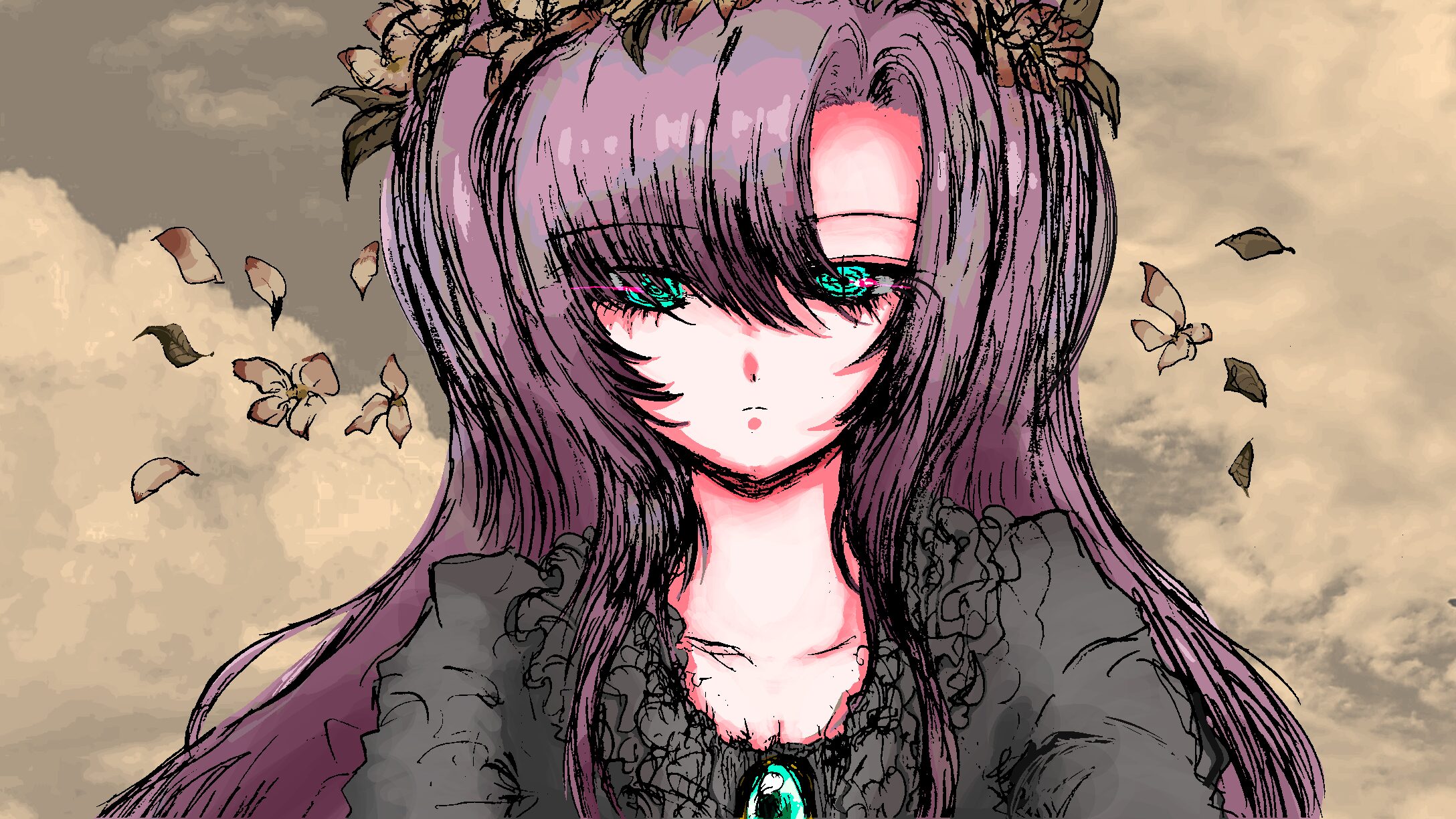“What cannot be spoken can still be drawn.”
RIRUKA, a current art university student, embodies this sentiment through her work.
🎥 Watch RIRUKA’s Video Work
Experience the artwork that blends painting and sound—an unspoken story unfolds before your eyes.
The video piece released this time, built around her hand-painted artwork, may appear tranquil at first glance, but quietly—yet unmistakably—communicates internal struggles and quiet prayers.
At its core, the video showcases one of her signature paintings. While it seems to portray a girl, her face is left vague—it’s not someone specific. This ambiguity and universality coexist, leaving room for the viewer to project their own story into the canvas.
What stands out further is the collaboration with music. A translucent voice flows through the video, giving time to the painting. As sound meets image, the once-static artwork begins to pulse with narrative. What was once a still picture begins to move within the viewer’s mind.
This collaboration mirrors the essence of ZINE culture. ZINEs originated as a medium of resistance—DIY publications meant to amplify voices left out of mainstream discourse. In the same way, RIRUKA’s work channels the unheard voices of girls, expressing pain, anger, dreams, and yearning through non-verbal means—pen and paintbrush as tools for survival.
Her brushwork is delicate, yet rough in places—eschewing perfection in favor of vulnerability. This aesthetic embraces the beauty in imperfection, reflecting the reality of a post-digital generation. In a world too curated and polished, her slightly “broken” visuals feel more honest, even redemptive.
■ Painting the Unspoken
A recurring theme in RIRUKA’s work is the image of the “girl.” However, these girls stray far from stereotypical “cuteness.” Their eyes are often lowered, facial features blurred or absent, and their expressions unreadable. But this is not an absence of emotion—rather, it’s emotion compressed, almost too dense to unpack.
Her art never explodes with feeling—it hovers just at the brink. The viewer, in turn, feels that tension. It resonates deeply, evoking memories and traumas we’ve long tried to forget.
ZINEs have always sought to visualize the “unspoken.” RIRUKA inherits this spirit and reimagines it through contemporary visual art.
■ Time and Memory as Layers
The video format introduces an added layer—time. Although it’s not animated in a conventional sense, the movements of the camera and the progression of the music infuse it with a dreamlike rhythm.
As the camera zooms into a section of the painting, seemingly abstract shapes begin to hold meaning. What appeared meaningless begins to look like a teardrop, or a memory fragment. This dynamic recalls the collage-like technique of ZINEs—piecing together fragments to create a unique personal narrative within each viewer.
■ The Enigma of RIRUKA
RIRUKA herself doesn’t seek the spotlight. But that restraint becomes part of her art’s power. Her gaze doesn’t shout “Look at me,” but rather asks, “Who am I, to you?”
Even as an art student, she resists trends and marketability. Her quiet consistency is reminiscent of a DIY ZINE creator laboring alone in their room—fiercely independent, fiercely intimate.
In today’s world of instant reactions and ephemeral trends, RIRUKA’s work operates on a different frequency—delayed beauty. The kind that lingers in your mind, waiting for the right moment to rise to the surface.
■ The Beauty of “Unfinished”
Watch the video multiple times, and a common thread emerges—a resistance to closure. Her artwork feels intentionally unfinished, as if waiting for the next stroke. The music too, leaves echoes rather than final notes.
This “unfinished” quality is not a flaw—it’s an invitation. A space for the viewer to complete the piece. Just as a ZINE is never whole without its reader, RIRUKA’s paintings reach completion only when they resonate with someone’s story.
■ Resonance with Rahab Punkaholic Girls
Her aesthetic aligns deeply with the world of Rahab Punkaholic Girls. These girls, too, carry wounds and histories, yet they still seek light. Like RIRUKA’s painted subjects, they are not meant to be consumed or defined—they are reclaiming space, rewriting their own myths.
■ In Conclusion
Between dreams and noise.
It’s an ambiguous space with no clear meanings. And yet, it’s where art speaks most profoundly. RIRUKA’s work tenderly excavates that liminal zone, asking us what it means to truly see, to truly feel.
Following her journey is not just watching an artist evolve.
It is, in itself, a ZINE experience.



コメント